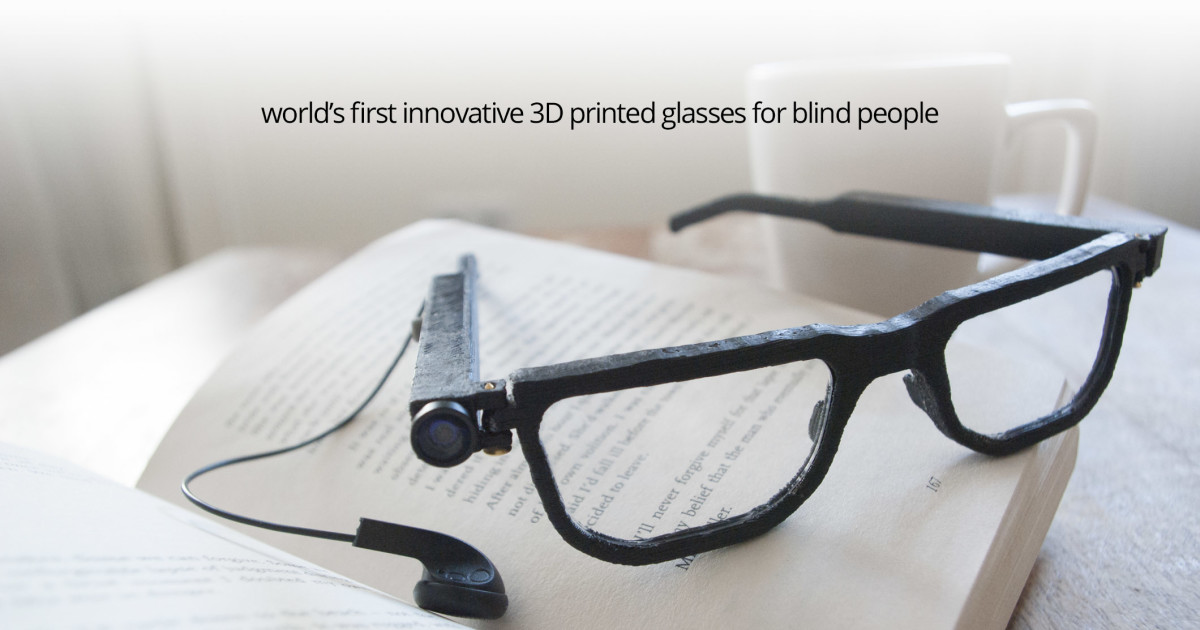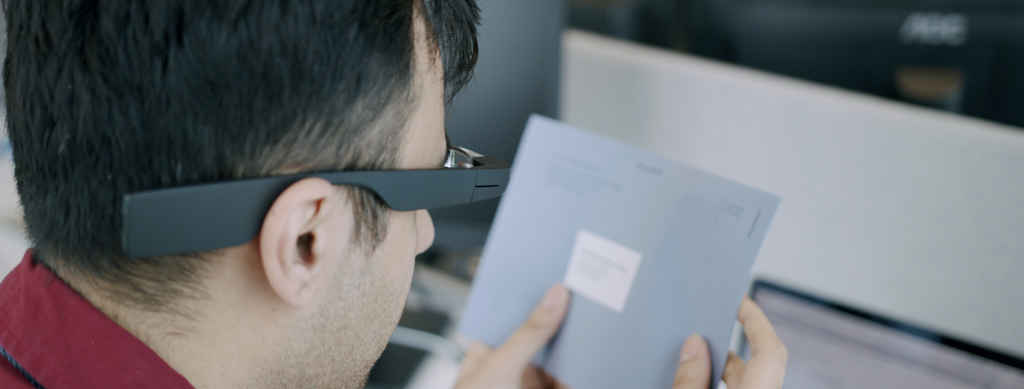Voice-Activated Assistive Devices: Empowering the Visually Impaired Through Innovation
Wiki Article
Enhancing Access Through Assistive Modern Technology for the Blind
The combination of assistive technology for the blind stands for a crucial advancement in accessibility, fundamentally altering exactly how individuals browse their settings and involve with culture. As we check out the diverse types of assistive devices and their tangible influences on day-to-day living, it ends up being necessary to check out how continuous technological improvements are improving the landscape of assistance for the blind neighborhood.Introduction of Assistive Technology
Assistive modern technology refers to a series of tools and software developed to boost the capacities of people with handicaps, consisting of those who are blind or visually damaged. This technology plays an important role in promoting freedom and boosting the lifestyle for customers. By giving alternative approaches for accessing info and executing day-to-day tasks, assistive technology empowers individuals to browse their atmospheres better.
The development and execution of assistive innovation embrace a selection of concepts aimed at fostering access. These principles consist of user-centered design, which prioritizes the needs and choices of the person, and the combination of technology right into everyday activities. Such innovations ensure that assistive gadgets are not only practical yet easy and likewise intuitive to utilize.
Additionally, assistive technology includes a diverse range of services, from low-tech alternatives like magnifiers to sophisticated innovations such as screen readers and Braille screens. The recurring evolution of this area is driven by the demand to resolve the special challenges dealt with by individuals with aesthetic disabilities (Wearable technology for low vision). As modern technology remains to development, the possibility for boosting accessibility and promoting inclusivity continues to be encouraging, ultimately adding to a much more equitable culture

Sorts Of Assistive Devices
Various sorts of assistive devices are readily available to sustain individuals who are visually impaired or blind, each developed to deal with details requirements and difficulties. These gadgets can be extensively categorized into 3 major kinds: low-tech, mid-tech, and sophisticated solutions.Low-tech tools consist of things such as magnifiers, Braille tags, and responsive maps. These are fairly easy tools that boost the customer's capacity to engage with their environment without needing complex technology.
Mid-tech devices frequently entail a lot more advanced attributes, such as electronic magnifiers and mobile Braille note-takers. These devices can offer capabilities like speech output, permitting users to accessibility information extra successfully.

Effect On Daily Living
The schedule of various assistive devices significantly improves the lifestyle for individuals who are blind or aesthetically damaged, impacting their day-to-day living in profound ways. By incorporating technologies such as screen readers, Braille shows, and audio description services right into their regimens, customers get higher autonomy and independence. These tools assist in accessibility to information, allowing individuals to perform daily tasks, such as reviewing e-mails, navigating public rooms, and appreciating media content.Furthermore, assistive devices empower individuals to involve more completely in social interactions and neighborhood tasks. The capacity to use mobile phones equipped with ease of access attributes allows for seamless communication and link with others. This connection cultivates a feeling of belonging and lowers sensations of isolation.
In professional settings, assistive modern technology sustains efficiency by enabling individuals to complete job jobs effectively. Tools like voice recognition software program and specialized magnifying tools make it possible for individuals to join the labor force on equivalent footing with their sighted peers.

Developments in Technology
Current technical developments have considerably changed the landscape of devices available for people that are visually impaired or blind. The assimilation of man-made intelligence (AI) and artificial intelligence has generated applications that boost navigation and things recognition. Mobile phone apps can currently make use of AI to identify and define environments in real-time, giving individuals with beneficial contextual information.In addition, innovations in haptic innovation have brought about the advancement of clever canes outfitted with sensors that detect barriers and supply responsive feedback. This encourages users to navigate their environment with raised confidence and freedom. Developments in text-to-speech software application and braille display screens have actually boosted the accessibility of digital content, enabling for smooth communication with different media.
Wearable innovations, such as clever glasses, are additionally making strides in helping visual disability. As technology proceeds to develop, the potential for also more transformative devices stays on the horizon.
Future Trends and Innovations
As innovation swiftly proceeds, the future of assistive tools for individuals who are blind holds tremendous guarantee. Developments in expert system (AI) and device discovering are positioned to change the way blind individuals engage with their atmospheres. AI-driven applications are being developed to enhance item acknowledgment, permitting customers to determine and browse their environments with better convenience and precision.
In addition, innovations in haptic responses innovation are enabling the creation of tactile maps and navigating help that give real-time details via touch. These technologies not just boost movement however likewise foster independence. Additionally, wearable devices equipped with increased fact (AR) functions are emerging, providing individuals visual details via sound descriptions, thereby bridging the void in between the physical and digital worlds.
Furthermore, the integration of smart home technology provides brand-new opportunities for accessibility, enabling individuals to manage their living environments with voice commands or mobile phone applications. As partnership between tech designers and the blind neighborhood continues, the focus on user-centered style will make sure that future advancements are customized to satisfy the distinct needs of this populace (Wearable technology for low vision). The trajectory of assistive technology assures a more empowering and comprehensive future for individuals that are blind
Conclusion
In verdict, assistive innovation plays an important role in improving ease of access for individuals with aesthetic disabilities. The varied range of tools, including display visitors and clever walking sticks, considerably boosts daily living and promotes freedom. Constant advancements in innovation and user-centered style ensure that these devices provide efficiently to the one-of-a-kind needs of the blind neighborhood. As advancements development, raised inclusivity and empowerment can be anticipated, eventually improving the quality of life for those impacted by aesthetic problems.The combination of assistive innovation for the blind stands for a crucial advancement in ease of access, basically altering how individuals navigate their atmospheres and engage with society.Assistive technology refers to a variety of devices and software program designed to boost the capacities of people Braille displays and notetakers with handicaps, consisting of those that are blind or aesthetically impaired. Wearable technology for low vision.As modern technology swiftly proceeds, the future of assistive devices for individuals who are blind holds immense promise. The trajectory of assistive innovation assures an extra inclusive and empowering future for people that are blind
In final thought, assistive innovation plays a vital function in enhancing accessibility for people with aesthetic impairments.
Report this wiki page